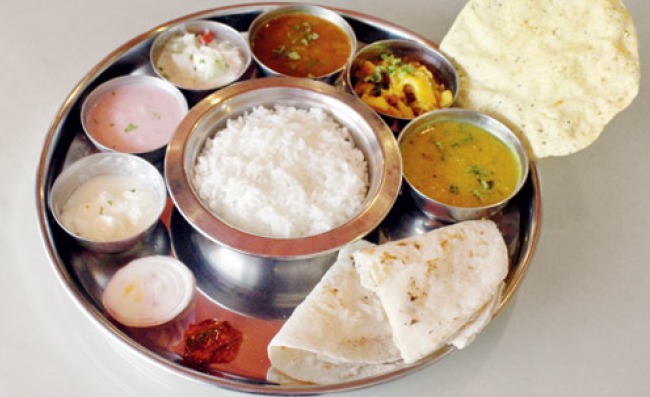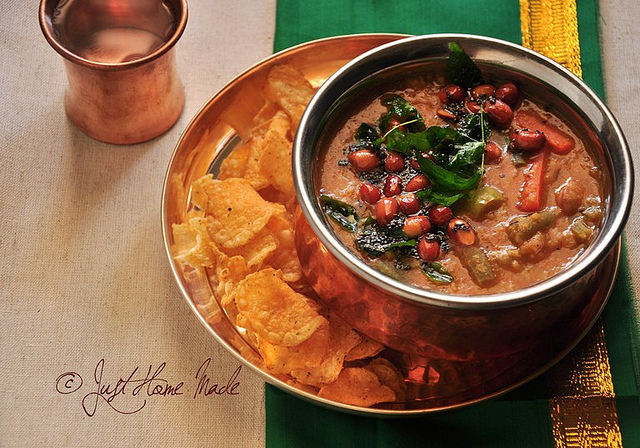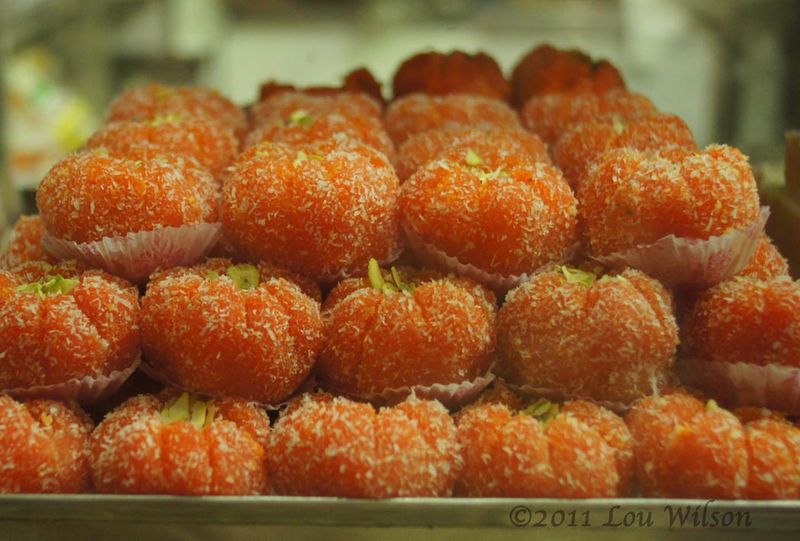 c r e d i t s
c r e d i t s TO Crazy Creatives
TO Crazy Creatives  c r e d i t s
c r e d i t s TO Crazy Creatives
TO Crazy Creatives CID Episode 68 - 10th August
RAKSHA BANDHAN 10.8
Yeh Rishta Kya Kehlata Hai - 11 Aug 2025 EDT
MEIN AKELA HOON 11.8
Rahul Sharma Quits?
Rajan Shahi vs Ekta!!!!!!!!!!!!!!!!!
Yeh Rishta Kya Kehlata Hai - 10 Aug 2025 EDT
Anupamaa 10 Aug 2025 Written Update & Daily Discussions Thread
Aryan attended the Saiyaara success bash!!
Navri - A Pro Gaslighter
War 2 - Advancing Bookings Opened
Is Softness Misconstrued as Incompetence? Is Velvet Mistaken for Void?
💇♂️ Happy Independence Day 💇♂️
Anupamaa 11 Aug 2025 Written Update & Daily Discussions Thread
18 years of Chak De India
Aneet Or Tripti; Who has better career choices? 👀
24 Years Of Dil Chahta Hai
Which Dvd You wanna buy Of CID ?!!!!!!
The Heart that Found Me - Shaurya Rajveer Preeta FS


 EAST INDIA
EAST INDIA
 SOUTH INDIA
SOUTH INDIA

 NORTH INDIA
NORTH INDIA
 WEST INDIA
WEST INDIA
When we use words like feminism, patriarchy, religion and mythology, even god, or goddess, we need to constantly remind ourselves that these words originated in western universities, and more often than not, convey ideas based on western contexts. They are not always universal.
For example, in the west, there was active suppression of goddess worship: Isis, Ishtar, Cybele, were all wiped out along with other male deities to make room for a single, all-powerful male God. Mesopotamian epics like Enuma Elish where the female chaos Tiamat is defeated by the male hero Marduk makes this explicit. Greek mythology that tells the story of how Zeus seduced nymphs is interpreted as an indicator of the cult of the powerful male-god overpowering the cult of many mother-goddesses. Judaic scholars spoke Shakina, the grace of God in feminine terms, but this was never ever actually given form as goddess. The worship of Mary, mother of God, was an attempt to include goddess worship in some form within the Christian fold, but Protestants rejected this when they threw out all things associated with the Church and Pope.
Such suppression never happened in India. In India, the goddess was always powerful. Without her there could be no God. And even God was not a single entity, visualised variously as Shiva and Vishnu.
Of course, there will be someone who will argue, if Indians have always worshipped goddesses, then why does the status of women leave much to be desired in India? This attempt to link goddess worship with status of women stems from an assumption that goddess represents womanhood in mythology. Yes, it may be so in western mythology, where the literal was always valued more than the symbolic: thus stories of Eve and Pandora are used to justify and explain suppression of women. But Hindu mythology thrives on the symbolic: the nymph of the puranas feared by the sage embodies worldly pleasures, not woman. It is very easy to confuse form (female) with thought (matter).
Nowadays when religious and secular forces use the word God', they are inadvertently referring to God of western traditions, more specifically Judeo-Christian-Islamic traditions, who is highly gendered, visualised in male form (as in the Sistine).
The Hindu idea of God was rather abstract in the pre-Buddhist period and was concretised in the post-Buddhist period. Buddha was not interested in the idea of God. He was of the opinion that when one is wounded, we should focus on the doctor, not on the hunter'. But the people were interested in the idea of God. And in Hinduism, the idea of God could not be explained without the Goddess. God was the mind, the divinity within. Goddess was the world, the divinity outside.
When the mind behaves like Shiva, the hermit, and shuns all things worldly, the world around behaves like Kali and Gauri, demanding attention. When the mind behaves like Vishnu, the householder; the world around becomes like Lakshmi, Sita, Radha and Rukmini and Satyabhama, a source of joy as well as a responsibility to bear. Unfortunately, most of the time, the mind behaves like Brahma - seeking control and dominion over the world around. So the goddess turns into Shatarupa, the nymph, who cannot be captured. Brahma tries to catch her but fails. When he stops and sits and pays attention carefully, Shatarupa transforms into Saraswati, goddess of wisdom, and enables his transformation into Shiva or Vishnu.
here's the link to the article --- http://timesofindia.speakingtree.in/spiritual-articles/faith-and-rituals/a-different-kind-of-goddess?utm_source=toi&utm_medium=toi&utm_campaign=toi_topnav
Gudi Padwa, the first Holy festival which marks the beginning of the New Year, new month and new day for the Hindus falls on Chaitra Shukla Pratipada. (31st March 2014) It is known as Gudhi Padwa (in Maharashtra), Ugadi (in Karnataka, Andhra Pradesh). [In other parts of country it is celebrated during Nau Roz (Kashmir), Baisakhi (Punjab), Cheti Chand (Sindhi), Naba Barsha (Bengal), Goru Bihu (Assam), Puthandu (Tamil Nadu), Vishu (Kerala)] On this very day Lord Brahma created the Universe. Therefore for Hindus, this day carries special importance. The day is celebrated with an auspicious bath, followed by decorating the doorway with a 'toran', performing ritualistic worship and hoisting the Gudhi.
Gudhi Padwa is celebrated as Ugadi (or Yugadi) in Karnataka and Andhra Pradesh. The day, begins with ritual showers (oil bath) followed by pooja to god and Panchanga Shravana.Houses are decorated with Mango Leaves and Rangoli and everyone in the family wear new clothes and celebrate the festival by wishing each other New year greetings.
The eating of a specific mixture called Bevu-Bella (Neem and Jaggery) in Kannada, symbolizes the fact that life is a mixture of good and bad, Happiness and Sorrow. Eating Neem and Sweet Jaggery means one need to take both Good and Bad or Happiness and Sorrow should be accepted together and with equanimity through the New Year. The special mixture consists of:
1. Neem Buds/Flowers for its bitterness, signifying Sadness
2. Jaggery which is sweet, signifying Happiness
In Karnataka a special dish called Obbattu or Holige (Puran Poli), is prepared on this occasion. It consists of a filling (gram and jaggery/sugar boiled and made in to a paste) stuffed in a flat roti like bread. It is usually eaten hot/cold with ghee or milk topping or coconut milk at some places of Karnataka.
For the re-establishment of Dharma, struggle is inevitable. History has been witness to this. Prabhu Shri Ramachandra united 18 Padma (1 Padma = 1015) monkeys to establish the Ramrajya', while Chhatrapati Shivaji Maharaj united thousands of Mavalas so as to establish the Hindavi Swarajya'.
Even today, unity of devout Hindus is essential so as to get rid of the so-called secular' democratic set-up, that has led to the deterioration of Bharat in all fields, and establish a Dharma-based Hindu Nation' (meaning, Ramrajya).
Therefore, become active to erect the Gudhi' of unity of Hindus for establishing the Hindu Nation' right from this Gudhipadwa, meaning, the Hindu New Year day !
Presently in Bharat, New Year is being celebrated on 1st January as per the Western calendar. Celebration on the eve of the Western New Year involves one indulging oneself in various malpractices like indulging in eve teasing after drinking, etc. So, instead of beginning the New Year on an auspicious note, it begins unpleasantly. To ensure that the beginning of the New Year begins on an auspicious note, celebrate it according to the Hindu scriptures, on Chaitra Shuddha Pratipada as per the Hindu lunar calendar. This date is glorious in all ways - as per the cycle of Nature and it also has historical and spiritual significance. All this contributes to endowing the one celebrating it, as per the Hindu scriptures, with several benefits. It is the duty of each individual to arrest the loss being caused to society due to blindly emulating Westerners.
'Gudi Padwa' is the day on which the universe was created. Since on this day Shri Brahma created the universe and the Satyayug began, it marks the commencement of the New Year.
The Divine consciousness emanating during sunrise, absorbed at that time lasts longer. Thus the Gudi should be worshipped within 5-10 minutes after sunrise !
On Gudi Padwa, the waves consisting of the fire principle (Tej tatva) and the creative Prajapati waves are activated on a large scale. The Divine consciousness emanating during sunrise, absorbed at that time lasts longer. This consciousness is stored in the body cells and is used as required. Hence the Gudi should be worshipped within 5-10 minutes after sunrise.
Position of the Gudi:
Care should be taken to raise the Gudi next to the main entrance of the house. The spot selected should be on the right side of the entrance(when facing outwards from the entrance of the home). The right side symbolizes the active state of the soul.
1. The area selected for raising the Gudi should be cleaned and then a Swastik rangoli should be drawn on the ground. Turmeric and vermilion (Haldi-kumkum) should be offered at the centre of the Swastik.
2. While raising the Gudi, the 'Shiva-Shakti' principle in the Universe should be invoked. This enables all the constituents of the Gudi to accept divine principles.
3. The Gudi symbolizes the Sushumna nadi' of our body. Hence, the Gudi should be raised at the entrance. And it should be kept tilted at an angle. - A Scholar (through the medium of Ms. Anjali Gadgil)
'O Lord Brahma, Lord Vishnu ! Please enable me to absorb the Principle of Creation and the Fire Principle present in the atmosphere. Let the Divine consciousness present in these principles be preserved constantly. Let the energy thus received, be used for my spiritual practice.'
The Gudi is a symbol of victory. Amongst the various qualities of God, 'Being Victorious' is one and it symbolizes that God has achieved victory at the outset and at various levels. To symbolize this at every level of war, a Gudi is hoisted.
The New year festival or Ugadi comes close on the heels of Holi. While the strong colors of Holi start fading away, the freshness of spring lingers on with sprightliness all around. The flame of the forest (trees with bright red flowers that blossom during holi) are in full bloom signifying an affluent season.It is believed that the creator of the Hindu pantheon Lord Brahma started creation on this day - Chaitra suddha padhyami or the Ugadi day. Also the great Indian Mathematician Bhaskaracharya's calculations proclaimed the Ugadi day from the sunrise on as the beginning of the new year, new month and new day. The onset of spring also marks a beginning of new life with plants (barren until now) acquiring new life, shoots and leaves. Spring is considered the first season of the year hence also heralding a new year and a new beginning. The vibrancy of life and verdent fields, meadows full of colorful blossoms signifies growth, prosperity and well-being.s With the coming of Ugadi, the naturally perfumed jasmines (mallepulu) spread a sweet fragrance which is perhaps unmatched by any other in nature's own creation! While large garlands of jasmine are offered to Gods in homes and temples, jasmine flowers woven in clusters adorn the braids of women. Predictions of the Year : It is a season for raw mangoes spreading its aroma in the air and the fully blossomed neem tree that makes the air healthy. Also, jaggery made with fresh crop of sugarcane adds a renewed flavor to the typical dishes associated with Ugadi. "Ugadi pachchadi" is one such dish that has become synonymous with Ugadi. It is made of new jaggery, raw mango pieces and neem flowers and new tanarind which truly reflect life - a combination of sweet, sour and bitter tastes! Preparing for the Occasion : Ugadi is celebrated with festive fervor in Maharashtra, Karnataka and Andhra Pradesh. While it is called Ugadi in A.P. and Karnataka, in Maharashtra it is known as "Gudipadava". On Ugadi day, people wake up before the break of dawn and take a head bath after which they decorate the entrance of their houses with fresh mango leaves. The significance of tying mango leaves relates to a legend. It is said that Kartik (or Subramanya or Kumara Swamy) and Ganesha, the two sons of Lord Siva and Parvathi were very fond of mangoes. As the legend goes Kartik exhorted people to tie green mango leaves to the doorway signifying a good crop and general well-being. It is noteworthy that we use mango leaves and coconuts (as in a Kalasam, to initiate any pooja) only on auspicious occasions to propitiate gods. People also splash fresh cow dung water on the ground in front of their house and draw colorful floral designs. This is a common sight in every household. People perform the ritualistic worship to God invoking his blessings before they start off with the new year. They pray for their health, wealth and prosperity and success in business too. Ugadi is also the most auspicious time to start new ventures. The celebration of Ugadi is marked by religious zeal and social merriment. Special dishes are prepared for the occasion. In Andhra Pradesh, eatables such as "pulihora", "bobbatlu" and preparations made with raw mango go well with the occasion. In Karnataka too, similar preparations are made but called "puliogure" and "holige". The Maharashtrians make "puran poli" or sweet rotis. Season For Pickles : Mangoes and summer season go hand in hand. Ugadi thus marks the beginning of the hot season which coincides with the school vacations. For the young ones, therefore, Ugadi is characterised by new clothes, sumptuous food and revelling. The air is filled with joy, enthusiasm and gaiety. Some people participate in social community gatherings and enjoy a tranquil evening with devotional songs (bhajans). Kavi Sammelanam : Ugadi Kavi Sammelanam is also a launch pad for new and budding poets. It is generally carried live on All India Radio's Hyderabad "A" station and the Doordarshan,(TV) Hyderabad following "panchanga sravanam" (New year calendar) narrating the way the new year would shape up in the lives of people and the State in general. Kavis (poets) of many hues - political, comic, satirical reformist, literary and melancholic - make an appearance on the Ugadi stage. Ugadi is thus a festival of many shades. It ushers in the new year, brings a rich bounce of flora and fills the hearts of people with joy and contentment. |




















